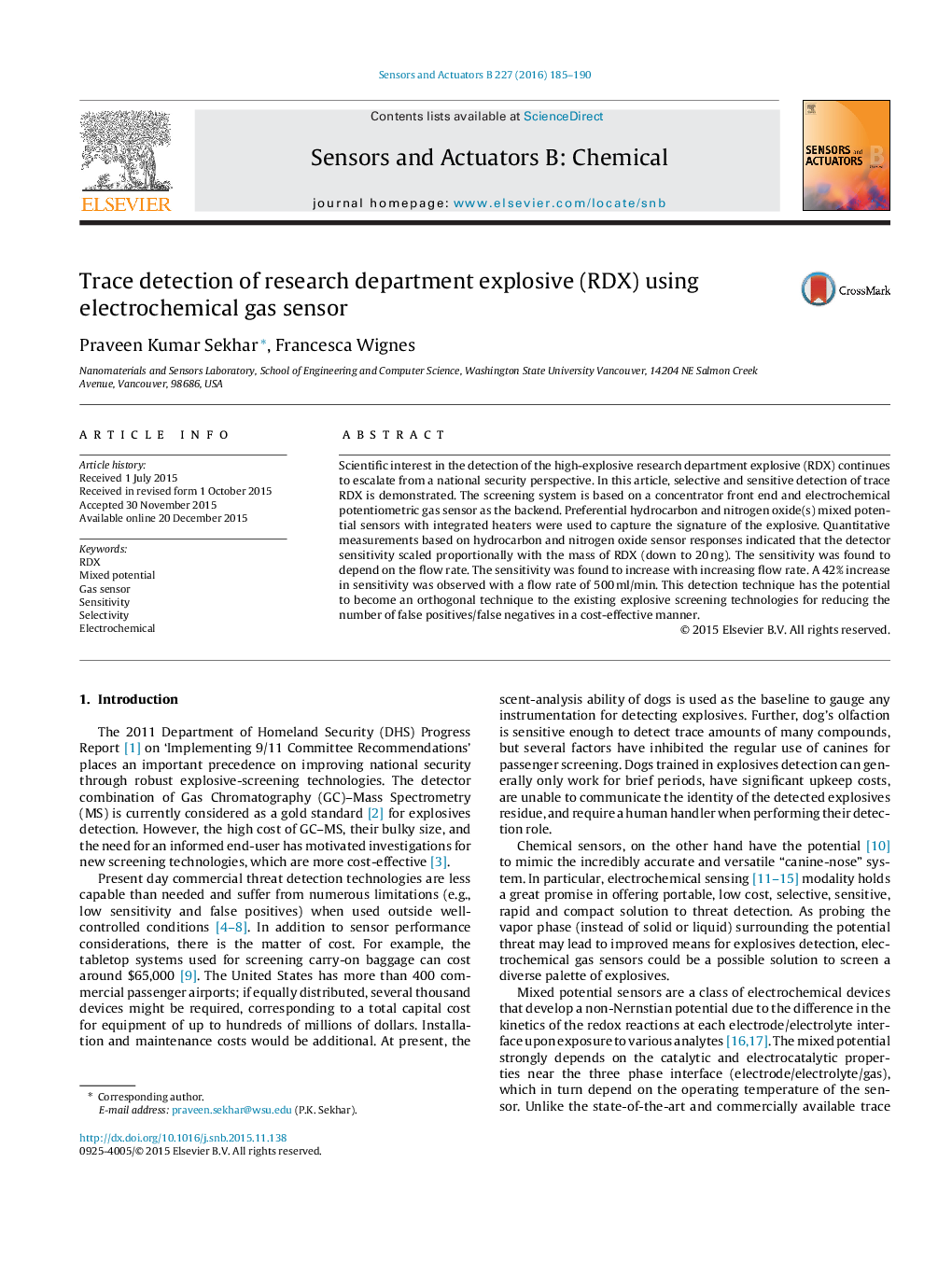| Article ID | Journal | Published Year | Pages | File Type |
|---|---|---|---|---|
| 7144436 | Sensors and Actuators B: Chemical | 2016 | 6 Pages |
Abstract
Scientific interest in the detection of the high-explosive research department explosive (RDX) continues to escalate from a national security perspective. In this article, selective and sensitive detection of trace RDX is demonstrated. The screening system is based on a concentrator front end and electrochemical potentiometric gas sensor as the backend. Preferential hydrocarbon and nitrogen oxide(s) mixed potential sensors with integrated heaters were used to capture the signature of the explosive. Quantitative measurements based on hydrocarbon and nitrogen oxide sensor responses indicated that the detector sensitivity scaled proportionally with the mass of RDX (down to 20Â ng). The sensitivity was found to depend on the flow rate. The sensitivity was found to increase with increasing flow rate. A 42% increase in sensitivity was observed with a flow rate of 500Â ml/min. This detection technique has the potential to become an orthogonal technique to the existing explosive screening technologies for reducing the number of false positives/false negatives in a cost-effective manner.
Related Topics
Physical Sciences and Engineering
Chemistry
Analytical Chemistry
Authors
Praveen Kumar Sekhar, Francesca Wignes,
